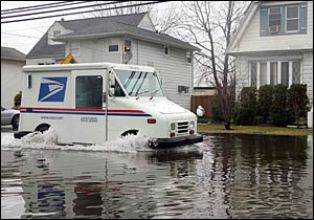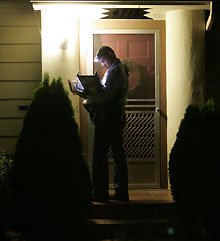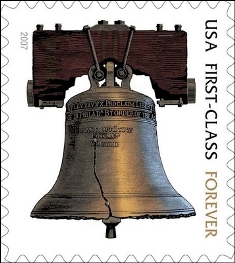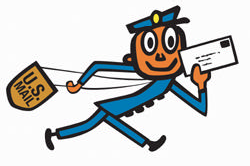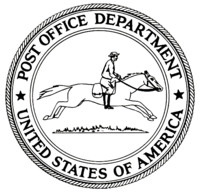|
SAFETY & HEALTH
Quit Cigarettes for Life®
For those of you that have a plan of attack to fight that tobacco habit, look at our great benefits!
Quitting tobacco may be the best thing you can do for your health. Make 2014 the year you stop
using tobacco. Enroll today in our FREE Quit for Life® Program. Call 1-866-QUIT-4-LIFE
(1-866-784-8454), or log on to www.quitnow.net/nalc for details to enroll. Expert Quit Coaches
will help you create and follow a tailored Quitting Plan. You’ll have their support via unlimited
one-on-one coaching by phone, 24 hours-a-day, 7 days-a-week.
By joining the Quit for Life® Program, you will also receive (at no cost):
- A printed Quit Guide to track your custom-developed Quitting Plan and help you through
any difficult situations.
- Advice on which type, dose, and duration of nicotine substitute or medication is right for you.
- Free nicotine replacement therapy products, like the patches, gum, or lozenges.
- Membership to Web Coach, a private, online community where you can complete activities,
watch videos, track your progress, and join discussions with other participants and coaches.
________________________________________________________________________________
___________________________________________________________________________________________
NALC HEALTH BENEFITS PLAN
INFORMATION

NALC Health Plan
Benefit Information
Publications and Forms
Here are some important numbers to
keep for reference:
PPO Network Providers/Cigna HealthCare
1-877-220-6252
(To confirm your provider’s participation or to locate a hospital)
Pre-certify a Hospital Admission
1-877-220-6265
(Prior to your medical hospitalization, pre-certify to avoid a
penalty)
24-Hour Nurse Help Line
1-877-220-6265
(To speak with a registered nurse regarding medical needs)
Prescription Services / CVS / CareMark
1-800-933-6265
(To locate network retail pharmacies, request mail order
refills or to check the status of an order)
______________________________________________________________________________________
DEFENSIVE DRIVING
More than 41,000 people lose their lives in motor vehicle crashes each year
and over two million more suffer disabling injuries, according to the National
Safety Council. The triple threat of high speeds, impaired or careless driving
and not using occupant restraints threatens every driver—regardless of how
careful or how skilled. Driving defensively means not only taking responsibility
for yourself and your actions but also keeping an eye on "the other guy."
The National Safety Council suggests the following guidelines
to help reduce your risks on the road.
Always wear your safety belt when driving and insist that your passengers
wear a safety belt, too. Wearing a safety belt is required by law in every
state, except New Hampshire. In some states, passengers also are required by law
to wear a safety belt.
- Do not drive while under the influence of alcohol or drugs. Alcohol slows
your reaction time, blurs and distorts vision, and impairs your judgment about
distance.
- Never use illegal drugs.
- Read the labels on all prescription medications for warnings; consult your
physician about how your medications or over-the-counter drugs could affect
your driving.
Speed
- Never exceed the posted speed limit. Weather conditions permitting,
always maintain the legal speed limit.
- To maintain a safe distance between you and the car ahead, keep a
following distance of at least two seconds. Add one second for each adverse
driving condition such as bad weather.
Intersections
- When approaching a green light, be prepared for it to turn red. It may
have been green for a long time.
- When stopped at a red light and it turns green, proceed slowly. Look
left and right before you drive through the intersection.
- Yellow lights mean proceed with caution, not speed up to get through the
intersection before the light turns red.
- Turning right at a red light is not permitted in every state. Even in
states where it is permitted, turning right is not allowed in some
intersections. Watch for signs at the intersection.
Passing
- Make sure you are in a passing zone.
- Be certain that there is no oncoming traffic.
- Look at all mirrors carefully before you make a lane change.
- Look behind you for any vehicles that might be trying to pass you.
- Be aware of any blind spots. Once the lane is clear, signal your move.
- Move into the passing lane, and accelerate to pass the car in front of
you.
Know Your Environment
- Never look directly at an approaching car's headlights. Use the right
edge of the pavement as a lane guide until the other car has passed.
- Be aware of any potential road hazards. Watch for cars that suddenly
swerve from their lanes to avoid pot holes, construction barriers, or
stalled vehicles.
- Bad weather such as rain, snow, or fog can make driving difficult.
Always watch for difficult conditions and be prepared to take defensive
action. Follow these bad weather tips:
- The tires on your car can lose traction on wet roads. Slow down if the
roads are wet.
- Snow and ice can make roads slippery. If your car goes into a skid, do
not push down hard on the brakes. Take your foot off the accelerator and
turn the steering wheel in the direction you want to go. Do not turn
sharply. Use moderate turns of the wheel until you come out of the skid.
- Slow down as you approach shaded areas, bridges, and overpasses in
winter. These areas freeze first and stay frozen longer.
- When driving on a highway, always be prepared for drivers to changes
lanes suddenly in order to exit.
- Do not let your emotions dominate your driving.
- Do not drive when you are tired. If you feel tired, pull off the road
for some exercise and fresh air or a cup of coffee.
Maintain Your Vehicle
- Cooling system (radiator, radiator cap, thermostat, and hoses)
- Brakes and brake fluid
- Belts (fan, alternator, and air conditioning)
- Tires
- Engine fluids (motor oil, transmission fluid, and coolant)
- Lights
- Wiper blades
Source: Defensive Driving: The Best Offense, National
Safety Council
__________________________________________________________________________________
DOG BITE AWARENESS

| |
Dog Bites Decrease, but Dangers Persist
The possibility of dog attacks is one of the hazards that letter carriers face daily. The number of postal employees attacked by dogs nationwide was 6,244 in 2017, compared to 6,755 the prior year. Overall, the figure for 2017 represents a 7.6 percent reduction in dog attacks across the country. While this reduction is encouraging, efforts to reduce the number of dog attacks continue. Letter carriers know that the first and most important defense is being aware of where potentially dangerous dogs are along each route. If letter carriers know where these dogs are, they can be cautious and prepared to avoid the dog and a potential attack.
In addition to traditional communication such as among letter carriers, by posters and through stand-up talks, USPS has implemented technology initiatives, including asking customers who use package pickup requests through the Postal Service website, usps.com, to indicate if there are dogs at their addresses when they schedule a pickup. This information is provided to carriers on their delivery scanners, which send alerts if an unleashed dog is reported in a delivery area. Having this information readily available is a positive step forward, but the possibility of a new dog or a normally restrained dog running free always exists. Letter carriers should be ready to defend themselves.
As an on-the-job instructor (OJI), Erin Terry urges new letter carriers to remain observant at all times for the threat of a dog attack. Terry, an Army veteran and member of Pittsburgh, PA Branch 84, has had more than her share of experiences with dangerous dogs since she began carrying the mail in 2014. She has suffered two serious attacks, both requiring months from work to recover. In 2015, Terry was approaching a patron’s door to put mail through the door slot. The main door was open. As she approached, two dogs pushed the storm door open and charged at her. “One got on one leg, and the other got on the other leg,” Terry said. “I had puncture wounds on both legs and was out of work for about three months.” Then, just a month or so after returning to work, Terry was putting a package on a front porch and, as in the previous incident, a dog pushed its way out the door. This time, there was only one dog—but it did far more damage. “It literally mauled me from head to toe,” she said. A neighbor noticed the attack and called for help. Terry again was rushed to the emergency room, this time with 14 life-threatening puncture wounds. She spent nearly six months off work recovering. Still, after two serious dog attacks and the trauma and fear that followed, Terry returned to carrying the mail because she loves her job. Terry urges her trainees, and all letter carriers, to take the warnings about dogs seriously. “When you hear these stories, don’t think you’re an exception, because this is real,” she said. “It happened to me, and it could happen to you.” She recommends rattling a fence to make noise to warn a dog of your presence, and says that carriers might consider skipping delivery when they see an open door or other potentially dangerous situation. “You always have to be ready,” she said. And, Terry added, always bring dog repellent spray. “Sometimes people forget dog spray and don’t think it is that important,” she said, “but it is important.”
Terry’s story has been covered by local television stations. She urges viewers to take simple measures to protect their letter carrier, such as learning when they usually visit a home each day and keeping a dog inside during that time. The Postal Service advises letter carriers to take proactive measures to protect themselves from dog attacks by keeping a keen eye out for dogs, avoiding signaling that you are afraid of the dog, avoiding startling a dog, standing your ground if a dog charges, and carrying and using dog repellent. If you observe a potentially dangerous situation involving a dog, or are attacked or threatened by a dog, report it to a supervisor. PR |
| |
|
|
| |
|
| |
|
| |
|
|
| |
|
| |
|
| |
|
Tips to help letter carriers prevent dog bites:
How to avoid being
bitten |
|
|
Don't run past a dog. The dog's natural instinct is to chase and
catch prey. |
|
|
If a dog threatens you, don't scream. Avoid eye contact.
Try to remain motionless until the dog leaves, then back away
slowly until the dog is out of sight. |
|
|
Don't approach a strange dog, especially one that's tethered or
confined. |
|
|
While letter carriers are discouraged from petting animals, people
who choose to pet dogs should always let a dog see and sniff them
before petting the animal. |
|
|
Tips for dog owners:
|
How to be a responsible dog owner |
|
|
Obedience training can teach dogs proper behavior and help owners
control their dog in any situation. |
|
|
When the letter carrier comes to your home, keep your dog inside,
away from the door, in another room, or on a leash. |
|
|
Don't let your child take mail from the letter carrier in the
presence of your dog. Your dog's instinct is to protect the
family. |
|
|
Spay or neuter your dog. Neutered dogs are less likely to bite.
HSUS statistics reflect that dogs that have not been spayed or
neutered are up to three times more likely to be involved in a
biting incident than neutered or spayed dogs. |
|
|
Dogs that haven't been properly socialized, receive little
attention or handling, or are left tied up for long periods of
time frequently turn into biters. |
|
|
|
________________________________________________________________________
Heart Attack Warning Signs
That Could Save Your Life!
The NALC joins the Postal Service in asking Letter
Carriers to the know and heed the warning signs of heart attacks.
NALC Director of Safety & Health Brian Hellman urges letter carriers
to,
"Know the warning signs, because being alert to the symptoms can
save your life and the lives of your coworkers. Too many victims
wait too long to seek help, so please don't ignore the telltale
signs."
Three simple facts you should know:
1. Heart Disease is the nation’s number one cause
of death, half caused by a heart attack.
2. Half of all heart attack victims wait more than
two hours before seeking help.
3. If you feel a warning sign(s),
seek medical attention immediately.
Warning signs:
Sweating
Shortness of breath
Discomfort or pain between the shoulder blades
Chest or abdominal discomfort or pain spreading
to the shoulders, neck, arm or jaw
Chest discomfort, pressure or burning
Indigestion or gas-like pain
Anxiety or nervousness
Dizziness or fainting
Unexplained weakness or fatigue
ACT IMMEDIATELY !
Warning signs can hit everyone differently, so
don't take any chances.
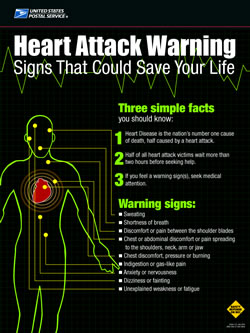
|
|


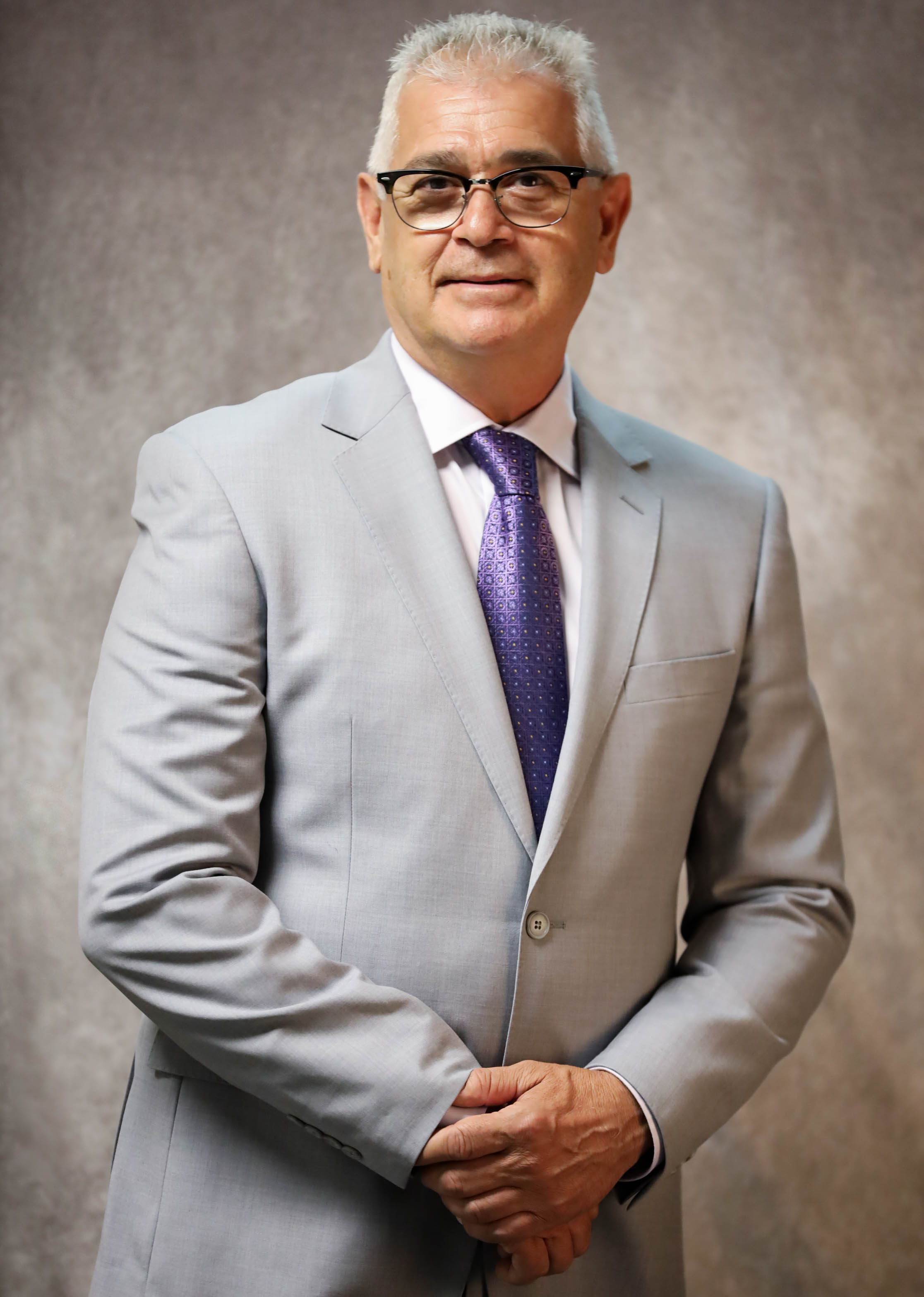
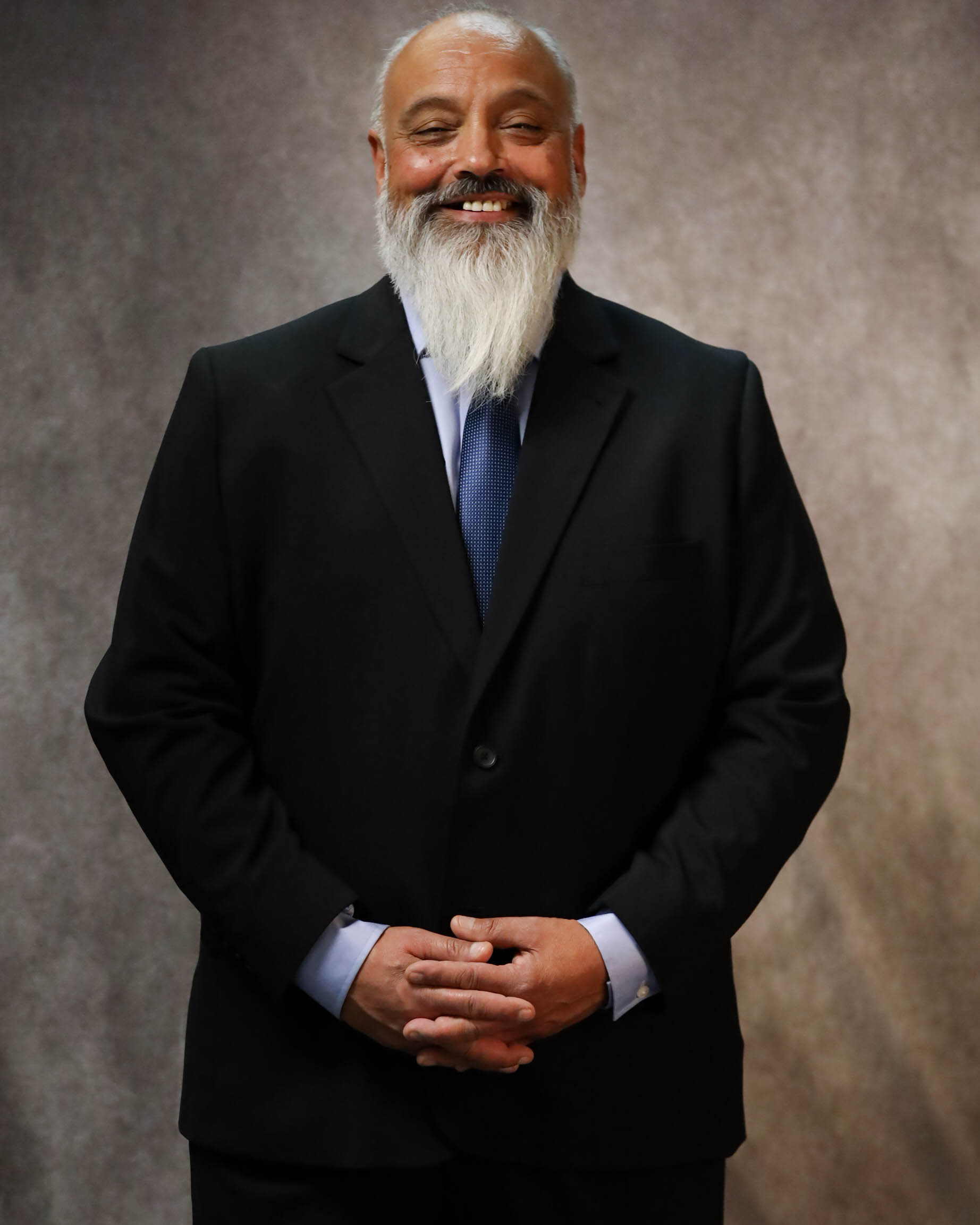


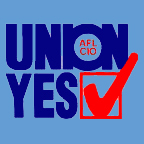


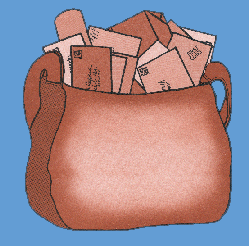
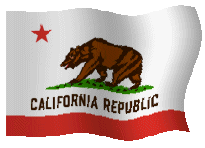






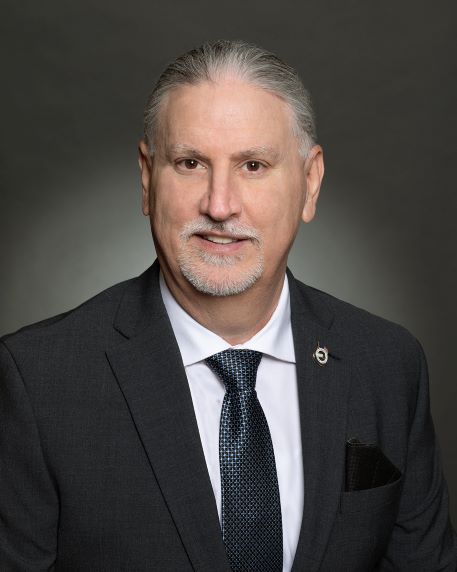
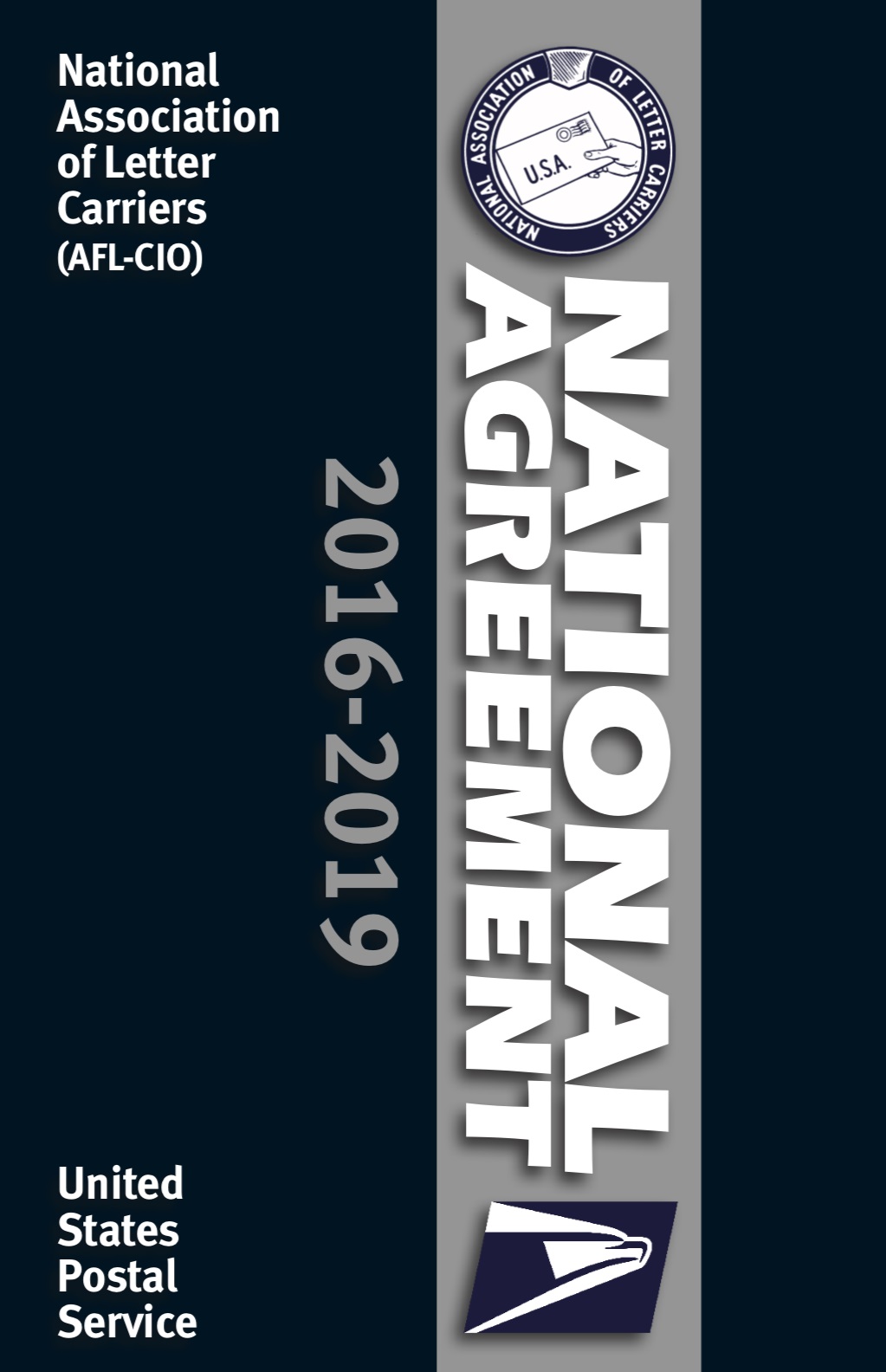
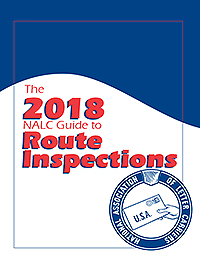
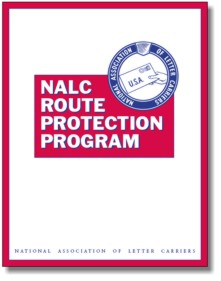
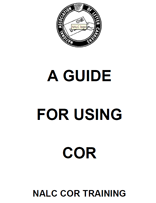
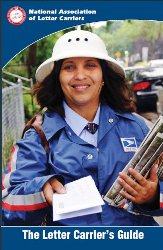
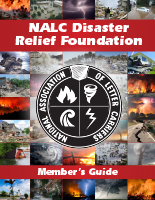
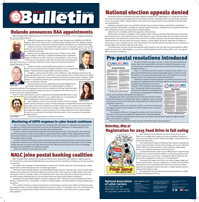
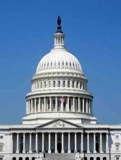
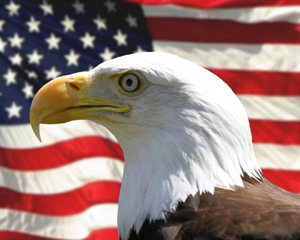
.jpg)
